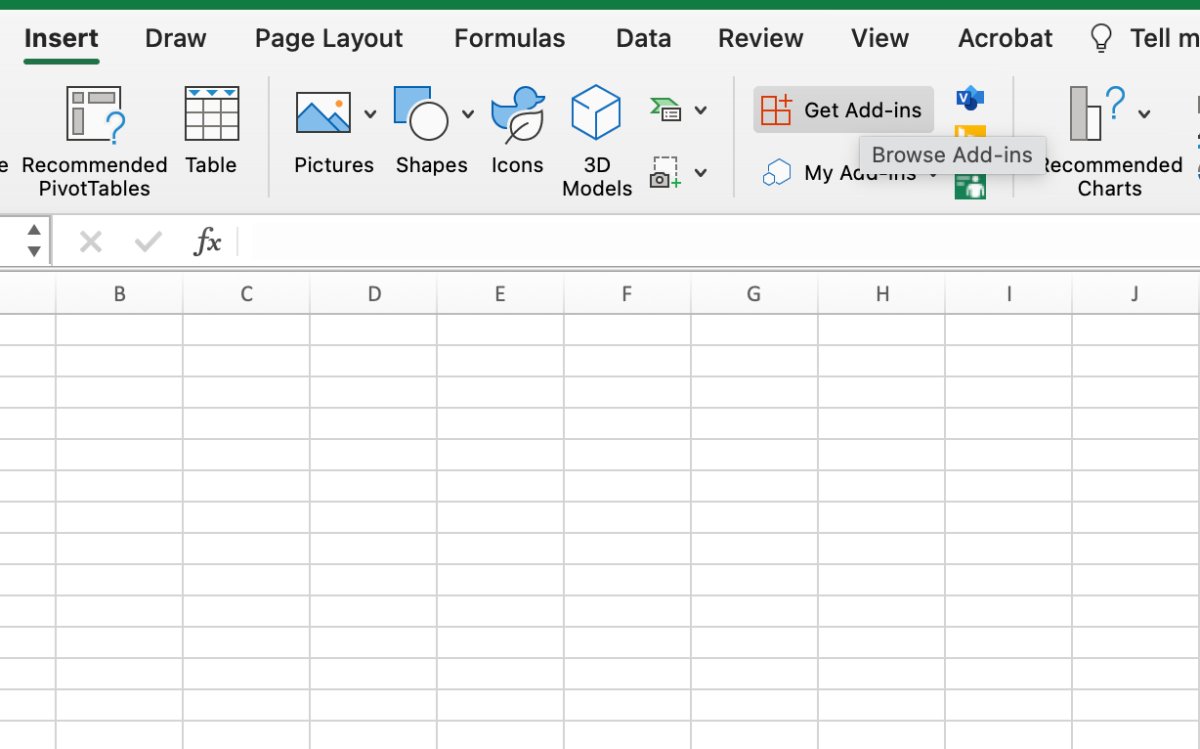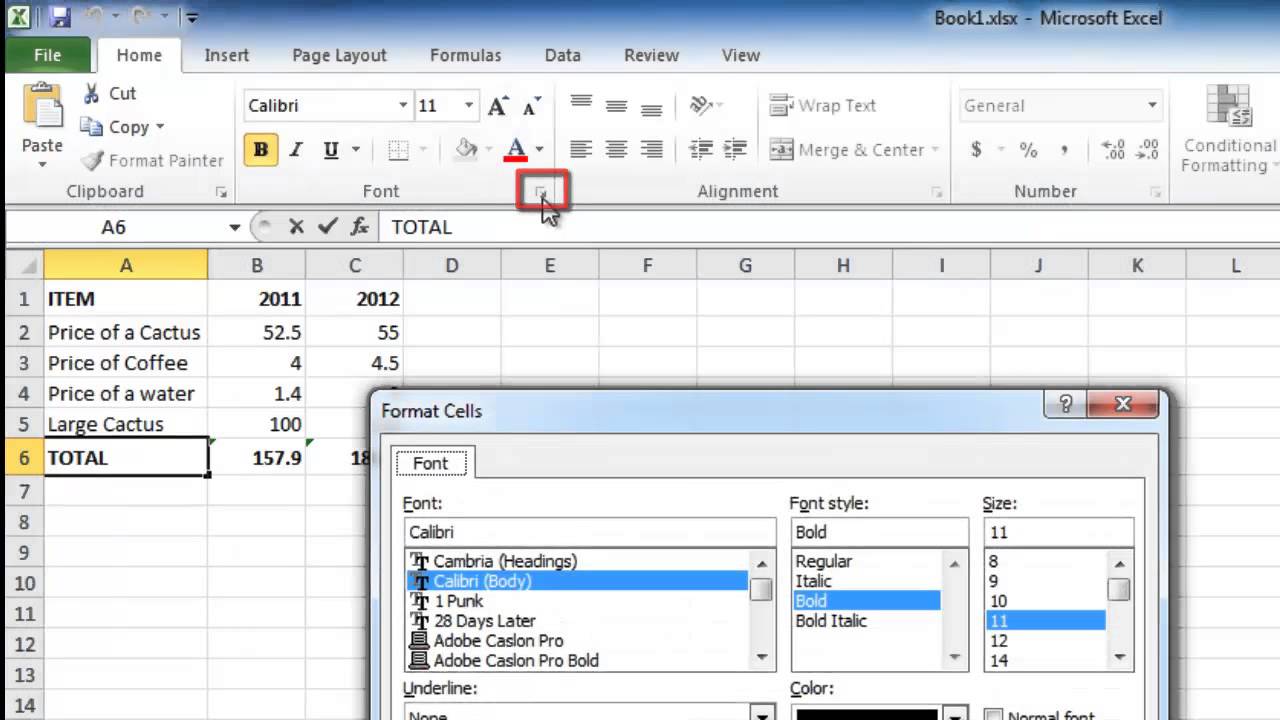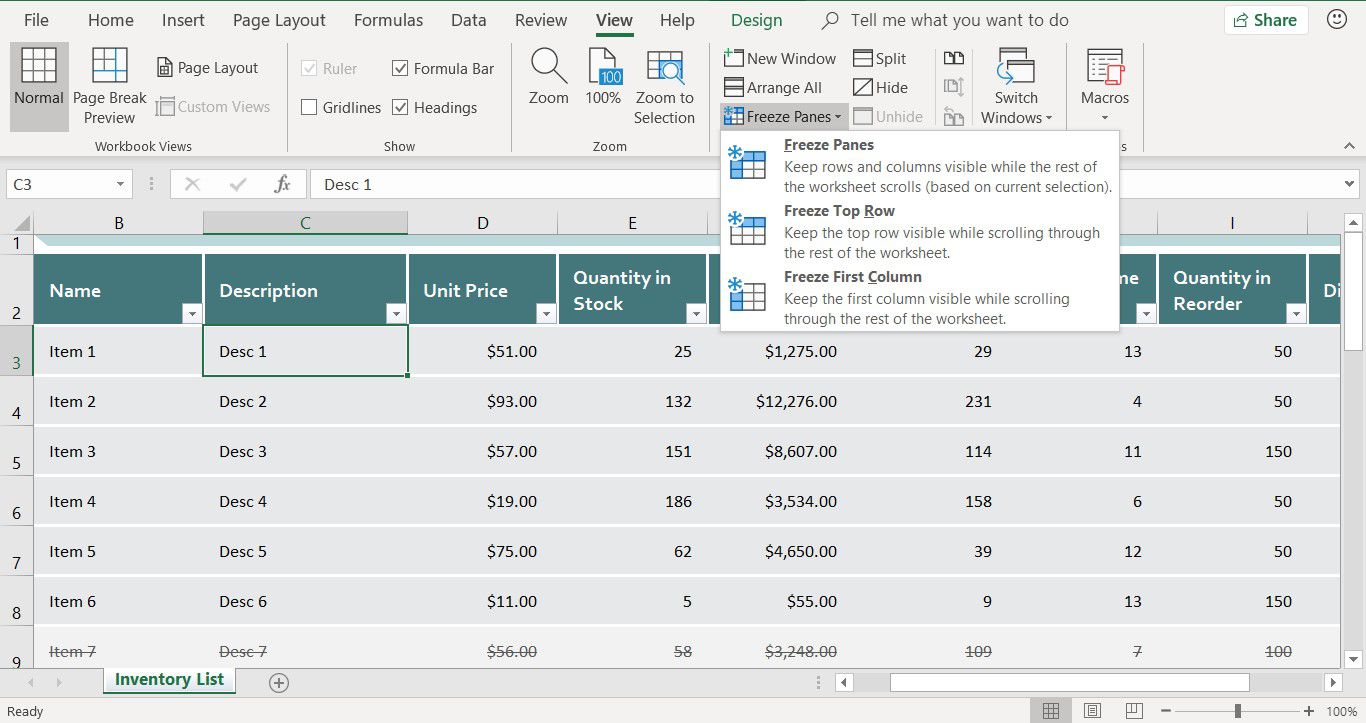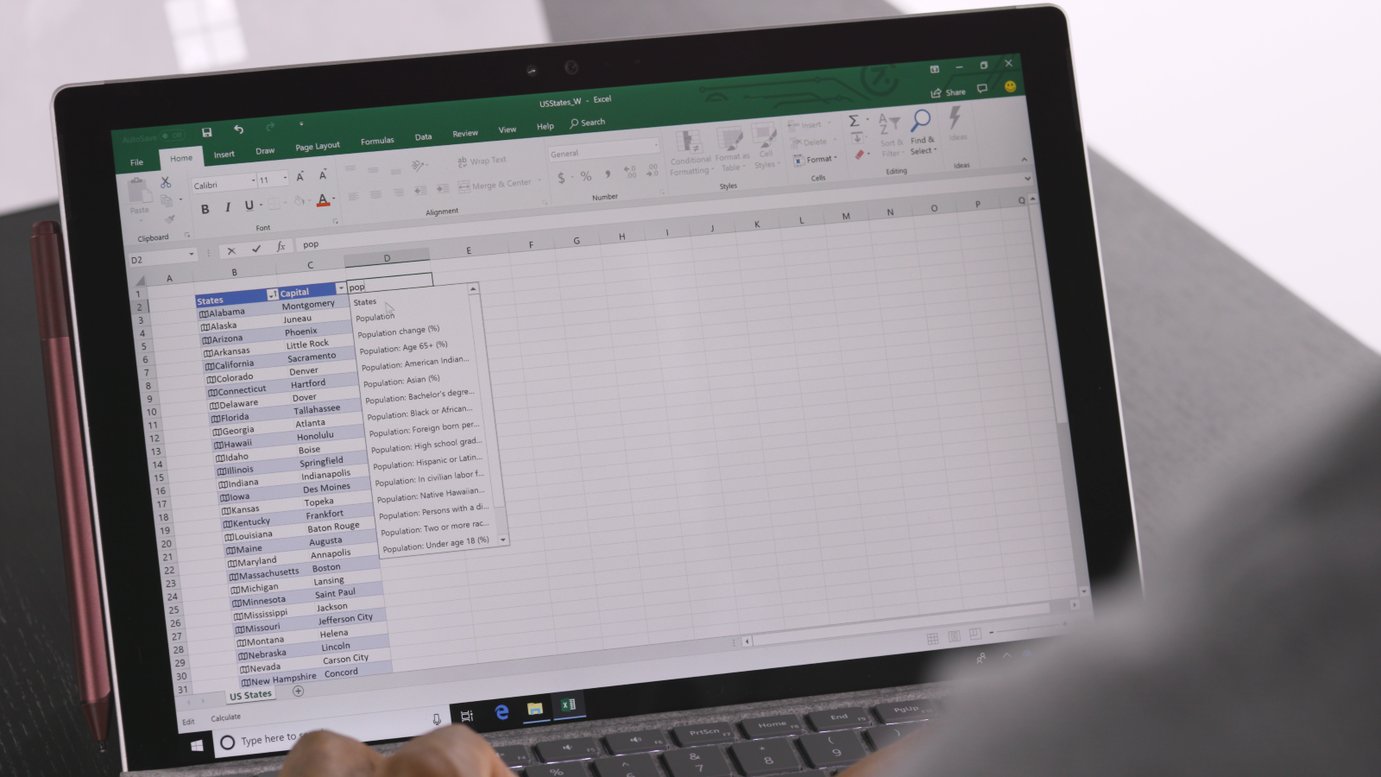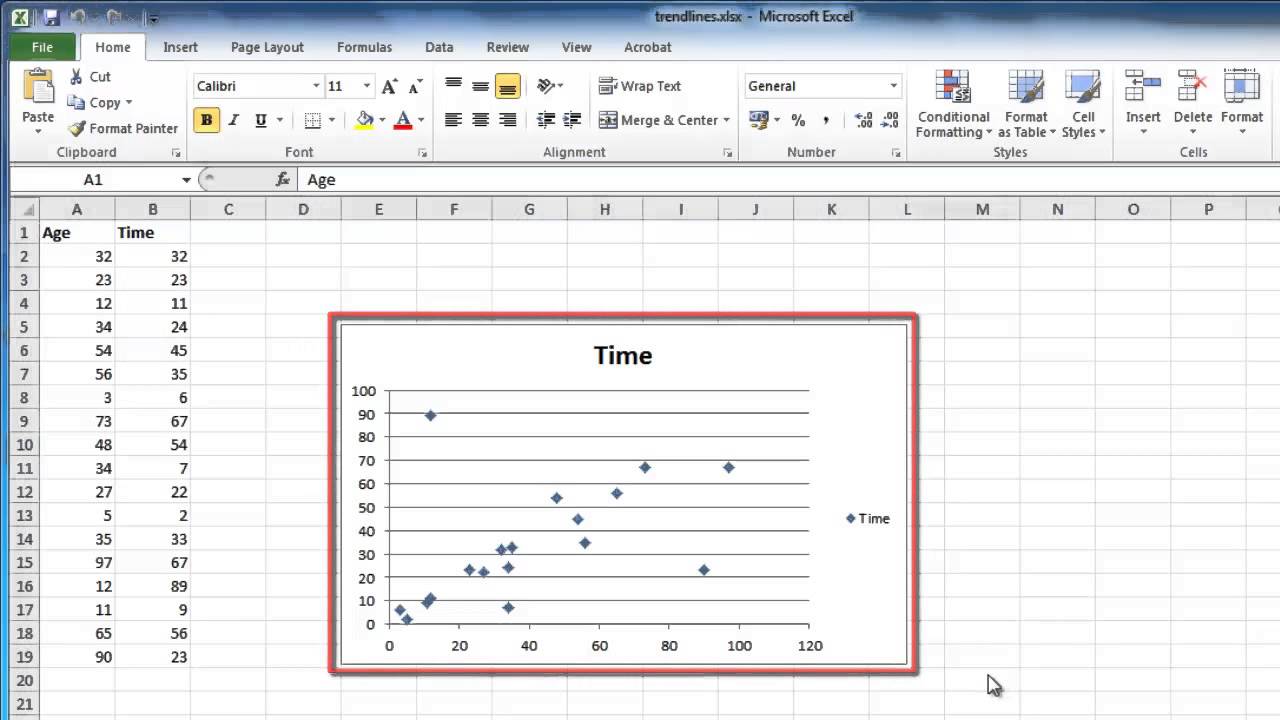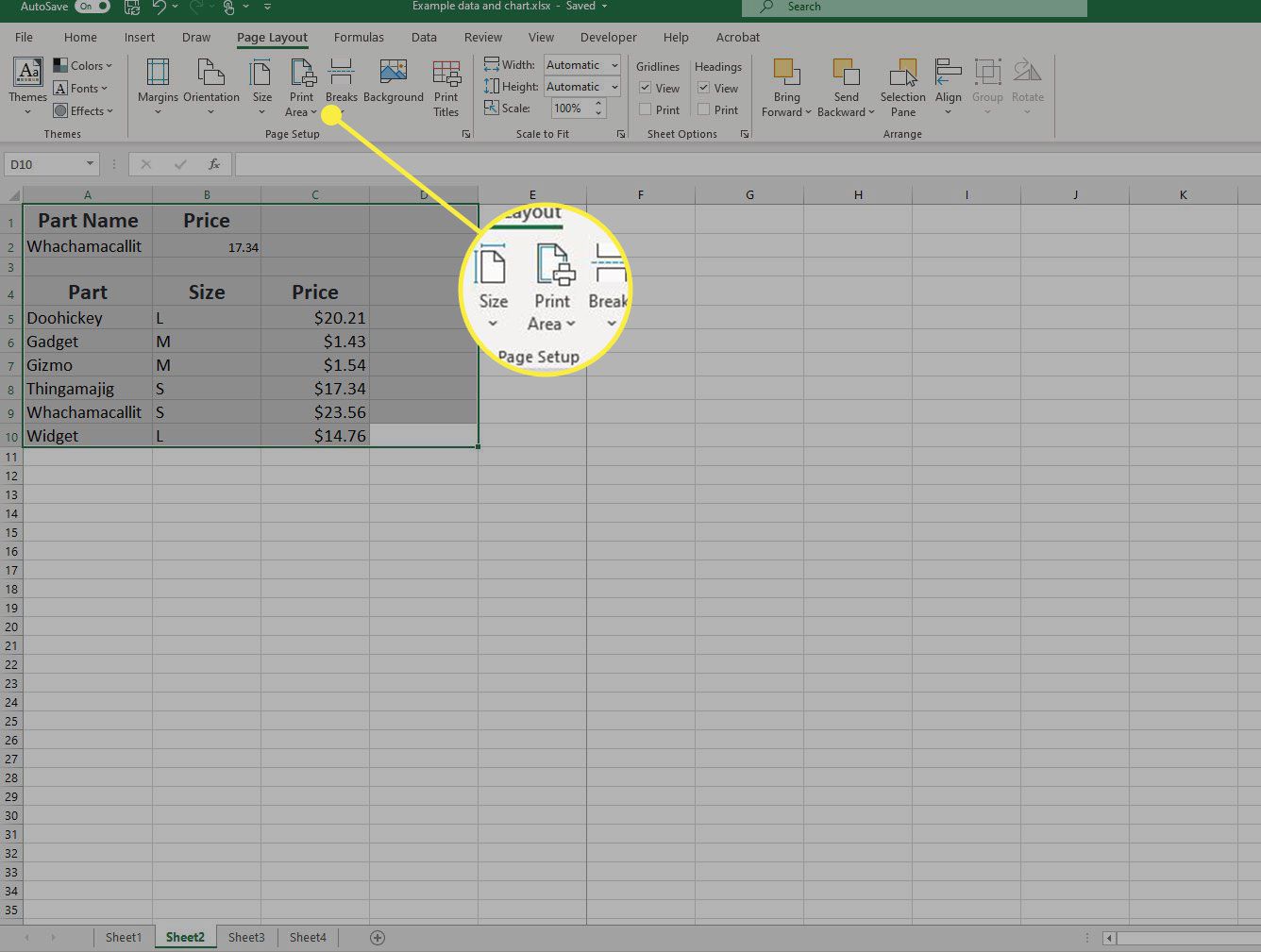Home>Technology and Computers>How To Select Multiple Cells In Excel
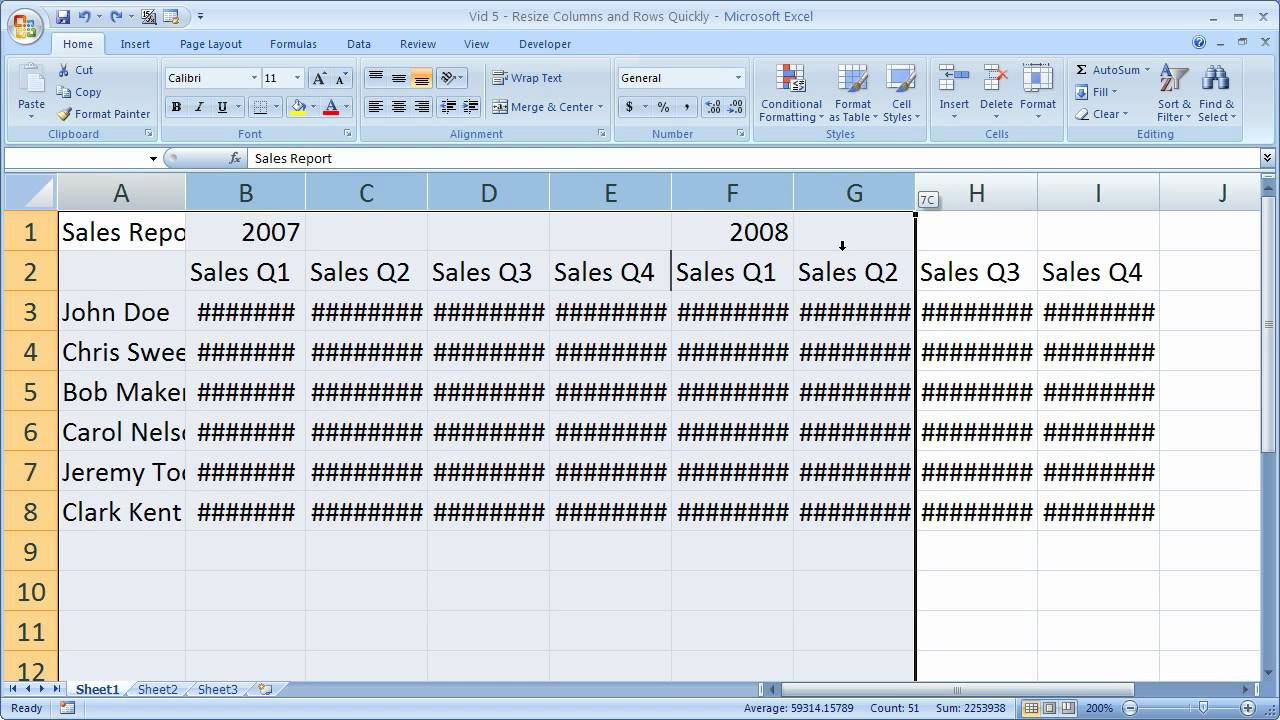

Technology and Computers
How To Select Multiple Cells In Excel
Published: March 2, 2024
Learn how to efficiently select multiple cells in Excel with our easy-to-follow guide. Master this essential skill for technology and computers!
(Many of the links in this article redirect to a specific reviewed product. Your purchase of these products through affiliate links helps to generate commission for Noodls.com, at no extra cost. Learn more)
Table of Contents
Introduction
Excel is a powerful tool for organizing and analyzing data, and being able to select multiple cells efficiently is a fundamental skill for anyone working with spreadsheets. Whether you're a beginner or an experienced user, knowing various methods to select multiple cells in Excel can significantly improve your productivity and streamline your workflow.
In this article, we will explore different techniques for selecting multiple cells in Excel. From using the mouse to keyboard shortcuts and advanced commands, we will cover a range of methods that cater to different preferences and scenarios. By mastering these techniques, you can save time, reduce errors, and gain better control over your data manipulation tasks.
Let's dive into the various approaches for selecting multiple cells in Excel, empowering you to work more effectively and make the most of this versatile software.
Read more: How To Unhide All Cells In Excel
Selecting Multiple Cells Using the Mouse
When it comes to selecting multiple cells in Excel, using the mouse is one of the most intuitive and commonly used methods. This approach allows for precise and flexible selection, making it ideal for various data manipulation tasks.
Click and Drag
The most straightforward way to select multiple cells using the mouse is by employing the click-and-drag technique. Begin by positioning the cursor on the cell from which you want to start the selection. Click and hold the left mouse button, then drag the cursor across the desired cells. As you drag, a highlighted border will indicate the range of cells being selected. This method is ideal for contiguous selections, where the cells are adjacent to each other.
Selecting Non-Contiguous Cells
In scenarios where you need to select non-contiguous cells, the mouse offers a convenient solution. Start by selecting the first range of cells using the click-and-drag method. Next, hold down the "Ctrl" key (or "Cmd" key on Mac) and click on additional individual cells or ranges to include them in the selection. This allows you to cherry-pick specific cells from different areas of the worksheet, providing a high level of flexibility.
Selecting Entire Rows or Columns
To select an entire row, simply click on the row number on the left-hand side of the worksheet. Similarly, to select an entire column, click on the column letter at the top of the worksheet. This method is efficient for working with large datasets, as it enables you to manipulate entire rows or columns with ease.
Read more: How To Insert A New Line In An Excel Cell
Selecting the Entire Worksheet
For situations that require selecting the entire worksheet, clicking the square at the intersection of the row and column headers (above row 1 and to the left of column A) achieves this in one swift action. This is particularly useful when you need to apply formatting, sorting, or other operations to the entire dataset.
Mastering the art of selecting multiple cells using the mouse can significantly enhance your Excel proficiency, allowing you to navigate and manipulate data with precision and speed. Whether it's a simple click-and-drag or the selection of non-contiguous cells, the mouse provides a versatile and user-friendly approach to managing your Excel spreadsheets.
Selecting Multiple Cells Using the Keyboard
In Excel, utilizing keyboard shortcuts for selecting multiple cells offers a quick and efficient alternative to using the mouse. This method is particularly beneficial for users who prefer to navigate and manipulate data without relying heavily on the mouse, enhancing their overall productivity.
Extending the Selection
To initiate the selection process using the keyboard, start by positioning the active cell at the beginning of the desired range. Once the active cell is in place, you can extend the selection using the following keyboard shortcuts:
-
Shift + Arrow Keys: By holding down the "Shift" key and pressing the arrow keys (up, down, left, or right), you can extend the selection in the respective direction. This method is ideal for selecting contiguous cells and provides precise control over the range being selected.
-
Ctrl + Shift + Arrow Keys: To expedite the selection process, combining the "Ctrl" and "Shift" keys with the arrow keys allows you to rapidly extend the selection to the last non-blank cell in the chosen direction. This is particularly useful for navigating large datasets and swiftly selecting multiple cells across rows and columns.
Selecting Non-Contiguous Cells
In addition to extending the selection, the keyboard offers a convenient way to choose non-contiguous cells without using the mouse. After selecting the initial range of cells, you can include additional non-contiguous cells in the selection using the following steps:
- Ctrl Key: While holding down the "Ctrl" key, use the arrow keys to move the active cell to the next desired location. This action allows you to add individual cells or ranges to the existing selection, providing a flexible and precise method for choosing non-contiguous cells across the worksheet.
Read more: How To Select Whole Column In Excel
Specialized Selection Shortcuts
Excel also provides specialized keyboard shortcuts for specific selection scenarios, catering to diverse user requirements. These shortcuts include:
-
Ctrl + A: Pressing "Ctrl + A" selects the entire worksheet, offering a swift way to encompass all cells for comprehensive data manipulation tasks.
-
Ctrl + Spacebar (Column Selection) and Shift + Spacebar (Row Selection): These shortcuts enable the selection of entire columns or rows, respectively, starting from the active cell.
By mastering the keyboard shortcuts for selecting multiple cells in Excel, users can streamline their workflow, navigate large datasets with ease, and execute precise selections without relying on the mouse. Whether extending the selection, choosing non-contiguous cells, or utilizing specialized shortcuts, the keyboard serves as a powerful tool for efficient data manipulation within the Excel environment.
Selecting Multiple Cells Using the Name Box
In Excel, the Name Box serves as a versatile tool for navigating and selecting multiple cells with precision and efficiency. While it is commonly associated with referencing cells and creating named ranges, the Name Box also offers a convenient method for selecting specific cell ranges across the worksheet.
To utilize the Name Box for selecting multiple cells, begin by locating the Name Box, which is typically situated next to the formula bar at the top of the Excel window. The Name Box displays the address or name of the currently selected cell, providing a quick reference point for navigation and selection tasks.
Once the Name Box is identified, the process of selecting multiple cells involves entering the cell range directly into the Name Box. This can be achieved by following these steps:
-
Entering Cell Range: Click on the Name Box to activate it, then input the cell range using the standard A1 reference format. For example, entering "A1:D10" in the Name Box selects the range of cells from A1 to D10.
-
Pressing Enter: After inputting the desired cell range, press the "Enter" key to confirm the selection. Excel will then highlight the specified range of cells, providing a visual indication of the selection.
By leveraging the Name Box for selecting multiple cells, users can precisely define the range they wish to work with, whether it involves data manipulation, formatting, or referencing specific cell ranges within formulas. This method offers a level of accuracy and control that is particularly beneficial for complex worksheets and large datasets.
Furthermore, the Name Box allows for the selection of non-contiguous cell ranges by entering multiple cell ranges separated by commas. For instance, entering "A1:D10, F1:F10" in the Name Box selects the non-contiguous ranges A1 to D10 and F1 to F10 simultaneously, providing a flexible approach to selecting diverse cell ranges across the worksheet.
In addition to its selection capabilities, the Name Box serves as a valuable tool for navigating large worksheets and swiftly accessing specific areas of the data. By entering cell ranges directly into the Name Box, users can seamlessly jump to different sections of the worksheet, enhancing their overall efficiency and productivity when working with Excel.
Mastering the use of the Name Box for selecting multiple cells empowers users to navigate and manipulate data with precision, offering a seamless alternative to traditional selection methods. Whether it's defining contiguous ranges or selecting non-contiguous cell groups, the Name Box provides a user-friendly and powerful approach to managing cell selections within the Excel environment.
Selecting Multiple Cells Using the Go To Special Command
In Excel, the Go To Special command offers a powerful and versatile method for selecting multiple cells based on specific criteria, providing users with a comprehensive set of options to tailor their selections according to various attributes and conditions within the worksheet.
To initiate the Go To Special command, begin by selecting the range of cells from which you want to start the selection process. Once the initial range is chosen, follow these steps to utilize the Go To Special command effectively:
Selecting Blank Cells
The Go To Special command allows users to select all blank cells within a chosen range. This can be particularly useful for identifying and managing empty cells within a dataset, enabling users to apply formatting, input data, or perform other operations as needed.
Read more: How To Move Cells In Excel
Selecting Constants, Formulas, or Data Validation Cells
With the Go To Special command, users can selectively choose cells containing constants, formulas, or data validation rules. This level of granularity in selection empowers users to focus on specific types of data within the worksheet, facilitating targeted analysis and manipulation.
Selecting Cells with Conditional Formatting
By utilizing the Go To Special command, users can efficiently select cells that have conditional formatting applied to them. This feature is valuable for identifying and managing cells with conditional formatting rules, allowing for precise adjustments and analysis of formatted data.
Selecting Row Differences or Column Differences
The Go To Special command provides the capability to select cells that differ from adjacent cells within the same row or column. This functionality is beneficial for identifying variations in data and addressing inconsistencies within the dataset.
Selecting Cells with Data Validation
Users can leverage the Go To Special command to select cells containing data validation rules, enabling them to focus on specific data input requirements and validation criteria within the worksheet.
Read more: How To Insert Multiple Rows In Excel
Selecting Visible Cells Only
In scenarios where filtering or hiding has been applied to the dataset, the Go To Special command allows users to select only the visible cells, excluding any hidden or filtered-out data. This feature enhances the precision of selections within filtered datasets, ensuring that only visible cells are included in the chosen range.
By harnessing the capabilities of the Go To Special command, users can tailor their cell selections based on specific attributes and conditions, providing a level of precision and customization that is essential for efficient data manipulation and analysis within Excel. Whether it involves targeting blank cells, identifying cells with conditional formatting, or selecting cells with specific data validation rules, the Go To Special command offers a comprehensive suite of selection options, empowering users to work with data in a highly tailored and effective manner.
Conclusion
In conclusion, mastering the art of selecting multiple cells in Excel is a fundamental skill that can significantly enhance productivity and efficiency for users across various data manipulation tasks. By exploring the diverse methods for selecting multiple cells using the mouse, keyboard shortcuts, the Name Box, and the Go To Special command, users can gain a comprehensive understanding of the versatile selection capabilities offered by Excel.
The mouse provides an intuitive and flexible approach to selecting multiple cells, whether it involves contiguous ranges, non-contiguous cells, entire rows or columns, or even the entire worksheet. This method caters to a wide range of user preferences and scenarios, offering precise control over cell selections and empowering users to navigate and manipulate data with ease.
Keyboard shortcuts offer a quick and efficient alternative to mouse-based selection, allowing users to extend the selection, choose non-contiguous cells, and utilize specialized shortcuts for comprehensive data manipulation tasks. This method enhances the overall workflow by providing rapid and precise selection capabilities without relying heavily on the mouse.
The Name Box serves as a valuable tool for defining precise cell ranges and selecting non-contiguous cell groups, offering a user-friendly alternative to traditional selection methods. Its functionality extends beyond selection, providing a seamless way to navigate large worksheets and access specific areas of the data with ease.
The Go To Special command stands out as a powerful feature that enables users to tailor their cell selections based on specific attributes and conditions within the dataset. From selecting blank cells to targeting cells with conditional formatting, data validation rules, or visible cells only, this command provides a comprehensive suite of selection options, empowering users to work with data in a highly tailored and effective manner.
By incorporating these diverse selection methods into their Excel proficiency, users can streamline their workflow, reduce errors, and gain better control over their data manipulation tasks. Whether it's selecting individual cells, contiguous ranges, or non-contiguous cell groups, mastering these techniques equips users with the skills to navigate and manipulate data with precision and speed, ultimately maximizing their productivity within the Excel environment.
